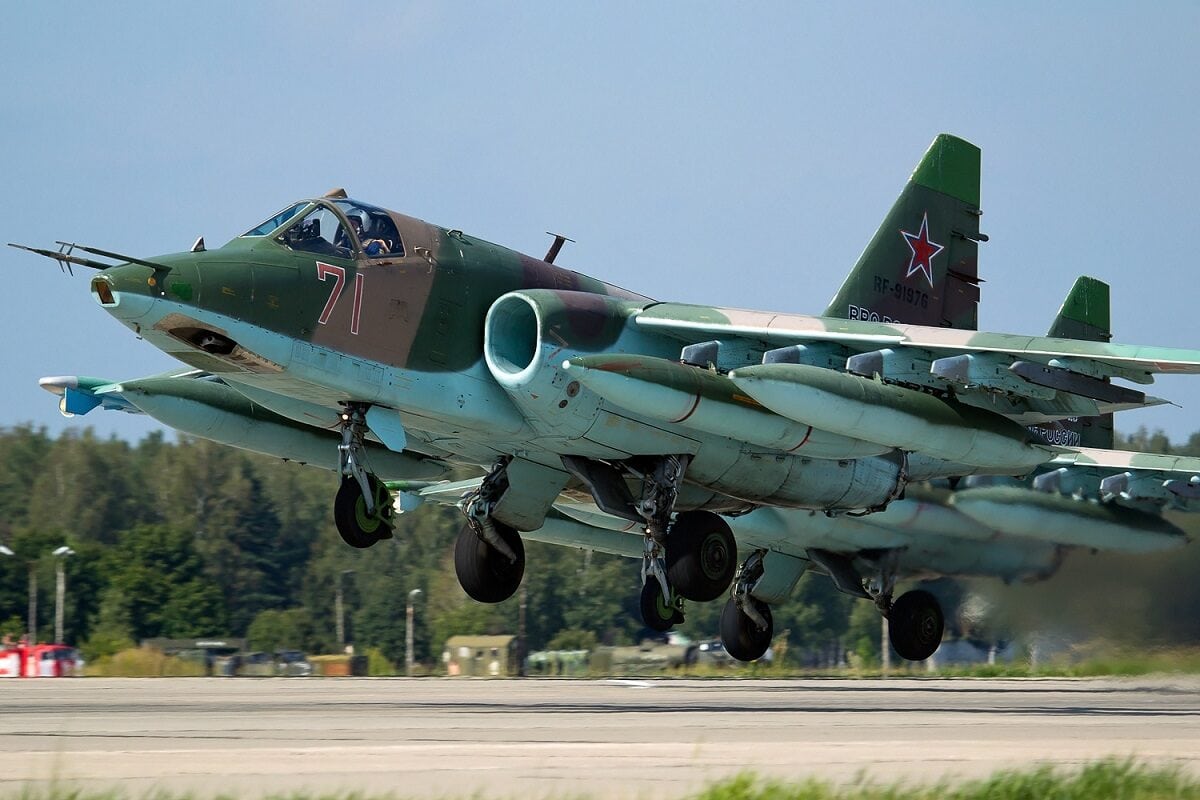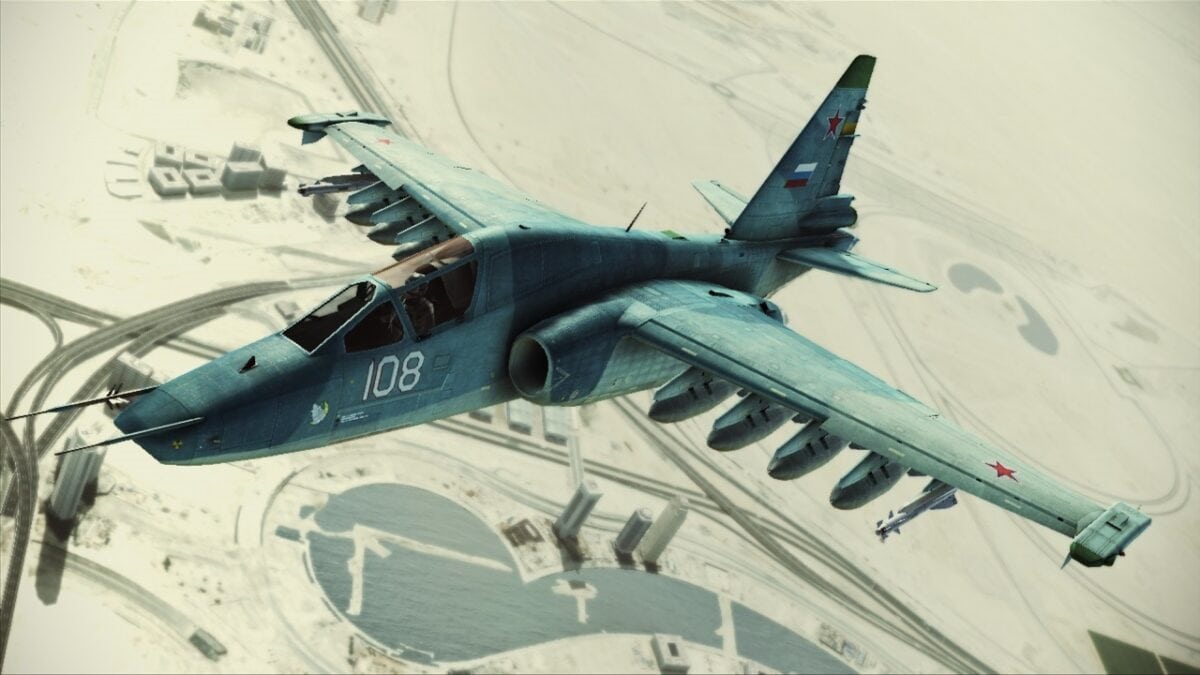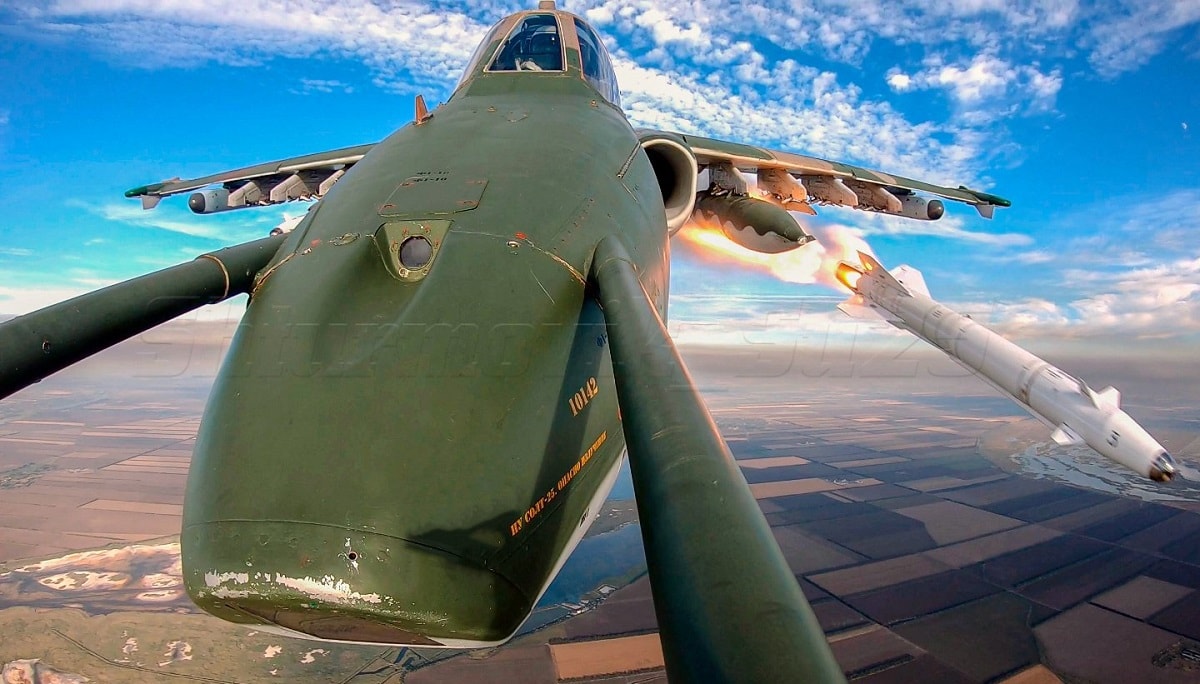As one of Russia’s primary ground attack aircraft, the Su-25 is arguably one of Russia’s most famous aircraft currently in service. Dubbed as the “Grach” in Russian (meaning rook) and the “Frogfoot” by NATO, the Su-25 has participated in almost every large-scale Russian military action since the collapse of the Soviet Union and has found significant success as an export of the Russian arms industry.
Most recently, the Frogfoot has been significantly employed by both sides in Russia’s 2022 invasion of Ukraine.
Su-25: How It Works
Crewed by a single pilot, the Su-25 is powered by two R-195 turbojet engines. The Frogfoot also possesses ten wing pylons to carry a variety of missiles for air and ground targets, as well as different types of dumb and laser-guided bombs. Equipped with a 30mm AO-17A internal gun and with the capability to launch rockets from UB-32A pods fitted to the aircraft, the Su-25 can be tooled for a wide range of ground attack missions.
Its most modern configuration – the Su-25SM3 – is fitted with the modernized “Vitebsk” avionics suite. This suite includes improved jamming, targeting, and warning systems to improve the combat effectiveness and survivability of the Frogfoot.
Su-25: Why It Was Needed
As described by Sebastian Roblin, the Su-25 was developed to fulfill an attack role similar to the Soviet Il-2 Shturmovik attack aircraft of the Second World War – one that would see the Frogfoot serve as a “flying tank.” Development of the aircraft began in 1968, spearheaded by the Sukhoi design bureau, with the first Frogfoots being produced in 1978. In addition to the modern Russian Su-25SM3, Ukraine and Georgia, which have experienced Russian invasion, have been able to develop their own modernized forms of the Soviet-made workhorse attack aircraft. Manufactured by the Georgian aerospace company TAM (whose Tbilisi factory was where the Frogfoot was first manufactured), the modernized Su-25KM Skorpion has formed an integral part of the Georgian Air Force, and features upgraded avionics, navigation systems, and weapon delivery systems which are designed to comply with NATO standards.
Ukraine’s most upgraded version of the Frogfoot is known as the Su-25M1K, and was developed by the Ukrainian company MiGremont. The Su-25M1K reportedly features improved sight equipment, flight data and navigation systems, among other upgrades.
Su-25s have seen extremely heavy use in Russia’s invasion of Ukraine by both sides. However, the conflict has provided hints that relatively slow-moving attack aircraft like the Su-25 are prone to being shot down in modern war, calling into question its future value. The Frogfoot has proven to be a risky weapon to employ in the war, as it has taken the largest share of fixed wing casualties on both the Russian and Ukrainian sides.
Nevertheless, Ukraine’s Su-25s appear to have played a significant role in harassing and beating back Russian attempts to cross the Siverskyi Donets River, while Russia’s Frogfoots have also appeared to find some success of their own in support of Russian forces.


In addition to the previously mentioned operators of the Su-25, a whole spectrum of countries in the former Soviet Union, Asia, Africa, and elsewhere operate the Su-25. The Frogfoot itself has fought in a variety of world conflicts, including the 2020 Nagorno-Karabakh War, the First Gulf War, and the Soviet war in Afghanistan, among others.
The wide proliferation of the Su-25 Frogfoot in its various configurations all but guarantees that it will remain a fixture of world conflicts for years to come. However, time will tell if modernized Frogfoots will be able to hold their own in battlefields increasingly removed from the Cold War environment it was designed in.
Wesley Culp is a Research Fellow at the Center for the Study of the Presidency and Congress. He regularly writes on Russian and Eurasian leadership and national security topics and has been published in The Hill and the Diplomatic Courier. He can be found on Twitter @WesleyJCulp.

